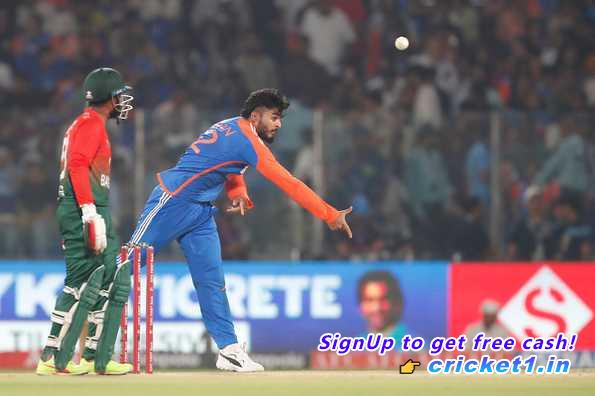
In a thrilling encounter in Delhi, beyond the aggressive batting displays, what stood out prominently for the Indian cricket team was their astounding bowling depth. As many as seven bowlers contributed by taking wickets in a single T20 International match, marking the highest number India has employed in such a format. Notably absent from this roster was Hardik Pandya, traditionally one of India’s key bowling figures.
Suryakumar Yadav, at the helm, found himself spoiled for choice, so much so that he avoided using some of his bowling options. He didn’t even resort to Rinku Singh, whose crucial performance had dragged India to a tie against Sri Lanka just months earlier. Had the need arisen, Suryakumar could have deployed up to 10 bowlers to complete the 20 overs in both Delhi and Gwalior, though, as he had hoped right from the series’ onset, it didn’t “come down to that.”
Historically, relying on batters who can’t bowl has been a frailty for India. However, the rise of players like Axar Patel has provided some respite. As recently as the last ODI World Cup, India had to rely heavily on a combination of four frontline bowlers and an all-rounder following Hardik Pandya’s early exit due to injury.
This current Indian squad presents a new paradigm, featuring bowlers like Nitish Reddy, who took charge of the new ball in Delhi, and Riyan Parag, who proved his prowess in Sri Lankan spin conditions. Abhishek Sharma adds depth with over 134 overs bowled in all T20s at an average economy of just over seven, alongside impressive best figures of 3/7. The combined effort of Suryakumar and Rinku during a nail-biting finish in Pallekele remains a vivid testament to this newfound depth.
“The evolution of the game means that relying solely on five or even six bowlers to perform well on any given day is rare,” remarked India’s assistant coach Ryan ten Doeschate. “So having a range of options is beneficial. While there’s an expectation for bowlers to contribute more, someone like Hardik abstaining in the last game exemplifies our bowling richness.
.”
Ryan highlighted the importance of maintaining balance within the team. It’s essential not to be overwhelmed by either an excess of frontline bowlers or bat-heavy lineups. He pointed out that having versatile all-rounders makes it easier to sometimes opt for a specialist bowler when tactical advantages demand it, thereby offering the captain a plethora of strategic choices.
“The selection of players who can fulfill multiple roles has permitted India to approach this series with unparalleled depth, promising advantageous selection dilemmas for upcoming tournaments like the World Cups and the Champions Trophy,” Ryan explained. “This player diversity is crucial for maintaining team balance, considering upcoming challenges.”
Ryan emphasized the team’s intention to gain insights into new team members introduced during this series. With debutants like Mayank Yadav and Nitish Reddy making appearances in the initial T20I, it’s crucial to understand how they fit into the broader team dynamics. These players, coupled with the foresight of involving talents like Jitesh Sharma and Tilak Varma, who have yet to play, highlight India’s burgeoning bench strength. Meanwhile, Sanju Samson is primed to showcase his capability as a temporary opener while Harshit Rana awaits an introductory opportunity.
From Ryan’s perspective, witnessing Sanju Samson’s aggressive start in Gwalior underscores team philosophy, emphasizing a fearless batting style. Even in a position to secure a steady innings, Samson opted to elevate the tempo of the game, mirroring the team’s approach of expanding player capabilities within a dynamic cricket narrative.
“We are focused on stretching our game boundaries, equipped with quality players and fostering an environment encouraging our players to perform with freedom,” Ryan stated. “It’s about granting them the confidence to explore their limits and ensuring they know that occasional failures are part of growth, especially as we approach critical moments in the next 18 months.”
As India prepares for crucial tournaments, there’s a conscious push towards making the most of their bowlers while embracing aggressive and expansive batting. The aim is to seamlessly blend these aspects, pushing boundaries in cricket innovation, and ensuring readiness for high-pressure scenarios, with the hope that the team will excel in upcoming international challenges.

